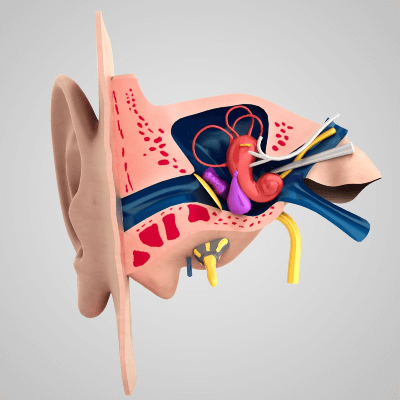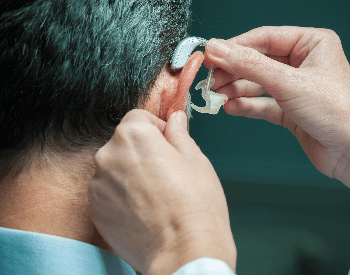
- Sense Name: Hearing
- Sense System: Auditory system
- Sense Purpose: Turn vibrations into sounds
- Sense Organs: Ears and Brain
- Sense Components: Outer Ear, Middle Ear and Inner Ear
- Field of Study: Auditory science (hearing science)
28 Hearing Facts for Kids
- Hearing is one of the five basic senses that humans have.
- Hearing is also known as auditory perception.
- Humans can hear sounds using their auditory system.
- The human auditory system consists of the outer ear, middle ear and inner ear.
- The outer ear is the visible part on both sides of your head, it focuses sound waves towards the middle ear.
- The middle ear transmits sound vibrations to the inner ear.
- The inner ear communicates these vibrations via the auditory nerve to the cochlear nucleus in the brainstem.
- Humans can hear frequencies between 20 and 20,000 Hz (Hertz).
- Humans are most sensitive to frequencies between 2,000 and 5,000 Hz (Hertz).
- Sounds at or above 85 dB (decibels) can damage the hearing ability of a human.
- A hearing test is used to grade and diagnose hearing loss in humans.
- A human is diagnosed with hearing loss when they have a partial to a complete inability to hear.
- A human’s hearing loss is graded using one of seven degrees.
- The seven degrees of hearing loss are normal, slight, mild, moderate, moderately severe, severe and profound.
- A human is considered to have normal hearing loss can’t hear sounds less than -10 and 15 dB HL.
- A human is considered to have slight hearing loss can’t hear sounds less than 16 and 25 dB HL.
- A human is considered to have mild hearing loss can’t hear sounds less than 26 and 40 dB HL.
- A human is considered to have moderate hearing loss can’t hear sounds less than 41 and 55 dB HL.
- A human is considered to have moderately severe hearing loss can’t hear less than 56 and 70 dB HL.
- A human is considered to have severe hearing loss can’t hear sounds less than 71 and 90 dB HL.
- A human is considered to have profound hearing loss can’t hear sounds greater less than 91+ dB HL.
- A human can use a small electronic device known as a hearing aid to improve their hearing ability.
- If someone can’t hear at all they’ll use a language known as sign language.
- Sign language uses hand signs and motions to communicate.
- According to the World Health Organization (WHO), about 466 million people worldwide have disabling hearing loss.
- Out of all the living organisms on our planet, it’s estimated that moths have the best hearing.
- The study of ears, nose and throat is called Otolaryngology.
- A doctor who practices Otolaryngology is called an Otolaryngologists.
Pictures Related to Hearing

A picture of a senior at a hearing exam.Credit: Ghetty Images

A picture of someone with a hearing aid.Credit: Ghetty Images

A picture of hearing aids and an ear model.Credit: Ghetty Images
Additional Resources on the Sense of Hearing
- How Hearing Works – Discover how hearing works on the Sound Relief website.
- Hearing (Sense) – Britannica – Learn more about hearing on the Britannica website.
- Hearing – Wikipedia – Explore the Wikipedia website to learn more about hearing.
